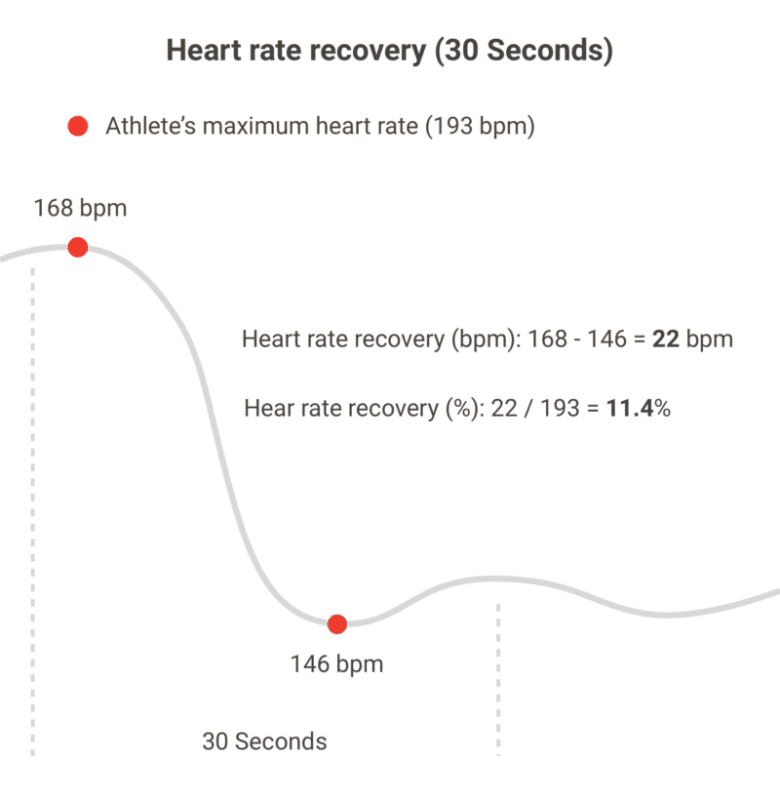

When it comes to assessing your cardiovascular fitness and overall health, two key metrics often come up: Heart Rate Recovery (HRR) and VO2 Max. While they may seem like similar measures, they tell us very different—yet complementary—stories about your body’s performance and longevity. Let’s break them down.
What is VO2 Max?
VO2 Max is the maximum amount of oxygen your body can use during intense exercise. It’s a direct measure of your aerobic capacity—essentially, how well your heart, lungs, and muscles work together to produce energy. The higher your VO2 Max, the more efficiently your body can deliver oxygen to your muscles, making it a gold standard for assessing cardiovascular fitness.


- Why It’s Important:
A higher VO2 Max is strongly linked to reduced risk of chronic diseases (like heart disease and diabetes) and even mortality. It reflects your body’s ability to sustain physical activity and recover from stressors. For athletes, it’s a performance benchmark; for everyone else, it’s a marker of long-term health.
What is HRR?
Heart Rate Recovery is the rate at which your heart slows down after exercise. For example, if your heart rate is 150 beats per minute (bpm) right after a workout and drops to 110 bpm within one minute, your HRR is 40 bpm. HRR measures how quickly your parasympathetic nervous system (your body’s “rest-and-digest” mode) kicks in to recover after exertion.


- Why It’s Important:
HRR indicates your autonomic nervous system’s health, which controls vital functions like heart rate, blood pressure, and digestion. A faster HRR means your heart is efficient and adaptable, while a slower HRR could signal poor cardiovascular health or overtraining.
Key Differences
| Metric | VO2 Max | HRR |
|---|---|---|
| What It Measures | Maximum oxygen usage | Recovery speed of heart rate |
| Focus | Aerobic fitness and endurance | Nervous system and heart adaptability |
| Application | Performance and longevity | Recovery and stress response |
Why You Should Track Both
- VO2 Max tells you your capacity: It’s like measuring the size of your engine. A bigger engine means more power and efficiency over the long term.
- HRR tells you your adaptability: It’s like checking how quickly your car cools down after a long drive. Faster recovery indicates a well-functioning system that can handle daily stressors and recover effectively.
Focusing on one without the other misses part of the picture. For example, you might have a great VO2 Max but poor HRR, signaling that while you can push hard during workouts, your body struggles to recover efficiently—an early red flag for overtraining or cardiovascular issues.
How to Improve These Metrics
- VO2 Max:
- Engage in regular aerobic exercise like running, cycling, or swimming.
- Incorporate high-intensity interval training (HIIT) to challenge your cardiovascular system.
- Maintain a healthy diet and manage body weight.
- HRR:
- Focus on active recovery with light exercise like walking or yoga.
- Practice stress management techniques like deep breathing or meditation.
- Get adequate sleep and avoid overtraining.
The Longevity Connection
Both VO2 Max and HRR are predictive of healthspan and lifespan. VO2 Max offers insight into your body’s capacity to function at its best, while HRR gives a snapshot of how well your body bounces back from stress. Together, they paint a comprehensive picture of your cardiovascular health, fitness, and resilience—key factors for living a longer, healthier life.
By tracking and improving both, you’re not just boosting your fitness—you’re investing in your future health.
